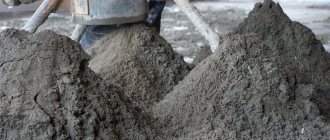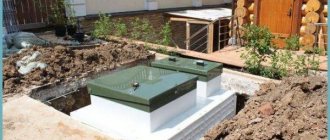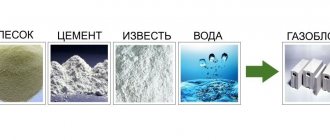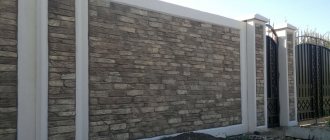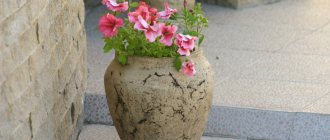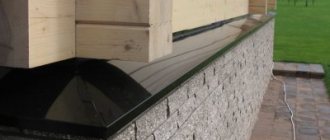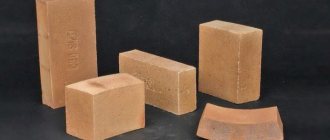Currently, finishing country houses with brick is very common.
Brick finishing gives the building an aesthetic appearance and looks quite expensive. However, often the masonry does not have a very attractive appearance and has remnants of adhering concrete. And here the question arises - how to clean the brick from the mortar? It can also occur when using old dismantled masonry material. There are several cleaning methods. When choosing a method, you need to take into account the nuances of the type of surface, amount and structure of contamination. There are mechanical and chemical methods.
It should also be taken into account that each type of brick has an individual approach to cleaning. So, for example, to clean silicate cement from cement, you cannot use chemical solutions, since such treatment will lead to its scattering.
Hand tools are the best helpers
This method is the simplest. All you need is water, a simple tool, skillful hands and patience.
First you need to moisten the drips. This process is considered complete when the cement stops absorbing liquid. As a result, we get a softer solution that comes off easier and is easier to remove using a chisel, hammer, spatula, metal brush and trowel. These fairly simple and unpretentious tools are cheap and are sold at any hardware store. Even a novice master can use them without any problems. You will also need sandpaper for finishing the smallest drops of solution.
In this type of work, some precautions are required - protection of hands and eyes. Here special gloves and goggles will come to the rescue, which must be used during the work process.
When the masonry surface is large and the mortar layer has a certain volume, it is more rational to use a chisel and hammer for cleaning. Also in this case, you can use a chisel, but keep in mind that it is designed for working with softer materials and can quickly become dull. In this case, you need to have several of them on hand.
For smaller stains, use a metal brush, trowel and spatula.
There is also a way to clean the surface using a regular metal nail. However, this option requires some skills, since this tool can damage the brick, and chips and grooves will ruin the appearance of the wall.
To correct individual bricks that have already been used, you can use a geological or construction hammer. It looks like a pickaxe with blunt ends. Such a tool will provide more accurate cleaning and keep the stone intact. Instead, of course, you can take a regular hammer or even an ax, but in this case you need to be very careful - only careful side blows on the hardened cement will avoid damaging the surface of the stone.
Prevention recommendations
Preventing efflorescence is much easier than dealing with it later. After all, they arise quite quickly and increase their localization. Eliminating them can take a lot of time, effort and money. In addition, there is no guarantee that white spots will not appear again after cleaning. Therefore, we determine in advance the possible factors that could spoil the brickwork.
- It is better to buy bricks from a manufacturer that has been proven over the years and by many customers. It’s definitely not worth saving on material. At the same time, it can be very difficult to distinguish a high-quality material for construction from one obtained with technological violations simply by appearance. Reviews and recommendations will help you find a good supplier.
- For construction, you need to dilute the solution as thick as possible and carry out construction work exclusively in dry weather. It is advisable to carry out construction only in the warm half of the year.
- If possible, there is no need to add special additives to the masonry mortar. It is better to try to dilute the mixture itself with clean water and high-quality coarse sand.
- If it is necessary to suspend work, unfinished parts of the building should be covered with film. It is advisable to bring them under the roof as soon as possible so that atmospheric moisture and precipitation do not get inside the material and saturate it.
- The drainage system, storm drainage and special canopies should be carefully designed to prevent excessive amounts of water from entering the façade during precipitation. This way, rain moisture will fall less on the bricks.
- It is better not to dilute or dilute the solution again. Often when using old bricks, they are soaked in water. It is better not to do this, but to remove the remnants of old cement or mixture using mechanical force.
- Special additives are added to the working solution, which replace calcareous substances and give the binder greater plasticity to prevent the natural process of salt formation in the masonry and their subsequent release to the surface. This is an important preventive measure, since convenient and most accurate application creates the most correct and uniform load on each brick. Previously, egg yolks were used for this purpose. Modern industry offers ready-made solutions. These are microfoaming agents containing petroleum derivatives, fatty acids or organosilicon compounds.
To learn how to remove efflorescence, watch the following video.
Useful tips
cleaning brick from cement
- with proper and sufficient drying, waterproofing, and drainage, the formation of white stains (efflorescence) on a brick wall can be avoided;
- it is necessary to take into account that if the technique and basic rules for cleaning from contaminants are violated, the brick may be damaged;
- When carrying out work to remove dirt from facing bricks, it is best to use a dry cloth, this will help avoid damage to the wall surface;
- To clean bricks used in facing work and to preserve the aesthetic appearance of the wall, depending on the type of contamination, including soot, it is best to use special pastes and household detergents.
When carrying out work on the construction of walls, you need to be extremely careful and try to avoid contamination with excess mortar; this is quite labor-intensive work. Otherwise, cleaning the brick will require considerable financial costs;
When constructing brickwork, it is necessary to provide careful and, most importantly, timely care with special means, for example, use a brick cleaning liquid, which will help preserve the aesthetically attractive appearance of the brickwork for a long time and protect it from moisture, frost and destruction.
Universal methods
You can also use brick chips mixed with sunflower oil. It is rubbed into the bricks after laying and left to dry. Then the growths are removed with a stiff brush. You can take any chemical for a car, apply it to the wall, let it dry and rinse off with water under pressure. After any of these methods, you need to consolidate the result using a water repellent. It will protect the brick from moisture.
There are many cleaning methods, but if you combine different methods you can achieve high-quality results.
How to clean brick from mortar
If you are going to build something new from old brick, then to do this you will need to clean it of the mortars remaining on its surface. Brick or finished brickwork must be cleaned using proven methods so as not to spoil the material.
Cleaning old used bricks
To clean brick from mortar yourself, you will need the following tools:
- hammer, chisel
- jackhammer, drill, emery
- hard brush.
To clean the brick manually, you need to take into account that this will take a lot of time. To remove the largest pieces of mortar from the surface of the brick, you will need a chisel and a hammer; the chisel can be replaced with a chisel. In this case, it is better not to use an ax, as it will quickly become dull. After removing large pieces, you will need to sand the brick.
Video on how to clean façade bricks
The process of cleaning brick by hand is very labor-intensive and time-consuming, so to speed it up, you need to use a drill with a special attachment, a jackhammer and sandpaper. The process generates a lot of dust; to protect your eyes and respiratory tract, you need to wear a respirator and special glasses.
You can also try to soften the cement mortar on the brick using water. The masonry mortar is prepared by mixing with water. When it becomes limp, scrub it with a stiff brush and then dry it. And the brick will be as good as new.
How to clean brick from plaster, video
It is possible to clean bricks using sulfuric acid, but only if the brick is red and of good quality; for sand-lime bricks this process is destructive. Place the brick in a cast iron bath, fill it with a solution of sulfuric acid mixed with water in a ratio of 1:7 or 1:10 and boil over a fire. The old mortar will completely dissolve and the brick will be suitable for use.
Cleaning bricks in finished masonry
There are several ways to clean brick in finished masonry, these are:
- auto chemical goods
- dilute hydrochloric acid
- sunflower oil with brick powder.
Auto chemicals can help you clean brickwork very easily. Apply it to a rag and remove unnecessary mortar from the brick, after drying, rinse with water.
Next method: mix dust from bricks with powder and wipe. This method is not perfect, since after rubbing with this mixture the brick takes a very long time to dry.
Ceramic brickwork is cleaned with hydrochloric acid. You need to very carefully wipe the brick with acid, after wetting the wall with water. The acid should not come into contact with the masonry mortar. In case of contact with the solution, it is necessary to wash with soap and water so that no traces appear.
Ideal seams in bricklaying, video
Cleaning bricks from efflorescence and dirt
If efflorescence appears on the wall, then for reliable protection, treat it with a specially prepared composition, and then with a water repellent. This will enable the brick materials to repel water. If you need to remove white marks only temporarily, you can use a brush with metal bristles and plain water.
Cleaning the brick from the mortar
The construction of the house box has been completed, but this does not mean that you can relax; a new problem arises here.
No matter how carefully you apply the mortar, the facing bricks will still not be clean. If further work on finishing the facade was planned, plastering of the walls can begin if the walls are cleared of cement blots. Accordingly, they need to be given an aesthetic appearance. Brick cleaning should be carried out with the slightest damage to the brick wall, ideally without any damage at all. This procedure can be implemented through two methods. The most popular method has been and will remain for a long time to remove cement mortar manually. The brick should be pre-moistened with water. and do this until the water begins to be absorbed. Adhered cement will also begin to soften, and it will be easy to remove. You will need for work: a chisel, a metal brush, a spatula, a trowel, a hammer, sandpaper, gloves and safety glasses.
Removing cement and salt deposits: securing the result
After removing excess dried mortar and white efflorescence on the wall, the achieved result must be consolidated, otherwise by the summer of next year the facade of the house may again become dark. The root cause - the contact of the external walls of the building with water - must be removed, a water repellent will help us with this. This is an organic-based product intended for coating natural and artificial surfaces (brick, concrete, marble, granite, foam concrete, stone, bark beetle plaster, etc.).
This substance has good vapor-permeable and at the same time water-repellent properties. As a result, the surface of the walls loses its ability to be wetted; drops of water are not absorbed, but roll down on it, like on glass. According to manufacturers, these coatings are absolutely harmless. As a result, we note that the range of products for cleaning facades from solution and salt deposits is extremely diverse, but in each specific case an individual approach to solving this issue is required.
- Author: Manager Andrey
Rate this article:
- 5
- 4
- 3
- 2
- 1
(2 votes, average: 5 out of 5)
Share with your friends!
How to clean rough floor tiles
Rough tiles on the floor need to be washed a little more often, since various small cavities fill much faster with dust, sand, and small debris. And usually, the usual mops and sponges are not suitable for this process. There are also certain rules that contain clear recommendations for caring for this type of material.
Basic Rules
What not to do:
- use metal brushes and scrapers, since the surface in most cases has a special coating that can be easily damaged if not properly maintained;
- use aggressive agents based on alcohol, acetone, solvents, chlorine;
- powder products, undiluted, are likely to cause you even more trouble, so when choosing, it is better to give preference to liquid products that do not contain solid particles;
- wash with a cloth made of wool or other materials with long fibers, as they will cling to the grooves and clog them even more.
Sometimes rough tiles can feel like sandpaper to the touch. This is a special coating, which is distinguished by the fact that the material is absolutely non-slip. It is most often used in the bathroom, where there is high humidity and, as a result, the risk of falls and injuries. Sometimes even more problems arise with such a surface, since usually everything you can think of sticks to it.
How to wash rough tiles with grooves or sand coating so that the process is easy and does not take too much time?
- Use non-fibrous materials. For example, a microfiber cloth or a mop with rubber attachments. They will not cling to the surface and leave behind even more debris. Brushes with medium-hard bristles are also very good at cleaning grooves from dirt. In addition, they can be used to easily clean even the deepest cavities and recesses.
- Before you start mopping the floor, be sure to use a broom or vacuum cleaner for dry cleaning. This way you can collect as much small debris as possible.
- If the tiles are heavily soiled and the cavities are clogged with dirt, it is permissible to apply some product to the surface. It will dissolve all dirt and make the cleaning process much easier.
Is it worth it?
We especially note that sometimes it is better to prevent many types of pollution. This will be much easier than having to worry about cleaning the brick later, because different types of brick have different properties, and all the methods described above are not suitable for each of these types (especially for fragile facing bricks). In addition, other cleaning methods will simply take up a lot of your time and effort, and in the case of sulfuric and hydrochloric acid, they can generally have a detrimental effect on your health if safety precautions are violated.
Therefore, it is better to use preventive measures in relation to the brickwork of your home. And then the new fresh colors with which your home will sparkle will personify the excellent taste and solidity of its owner.
Method number 1. Water + vinegar
Water and white vinegar (9%) taken in a 1:1 ratio help to clean the fireplace from soot. First, scrape off soot from the walls of the fireplace, which easily “comes off” from the brickwork. Pour the solution into a spray bottle and apply it to the smoked surface of the fireplace. After a few minutes, apply a second “coat” of your cleaner, and while it’s still wet, brush the bricks in a circular motion from top to bottom (to avoid streaks).
The same method is also suitable for cleaning fireplace glass. But to obtain a noticeable effect, it is better to add ammonia to the solution.
What is the cause of efflorescence?
There are three main types of efflorescence:
- Calcareous efflorescence appears in the form of hard, fairly thick deposits.
- Lime stains appear in thin layers in the form of dusty deposits that are quite soft to the touch.
- Lime efflorescence in the form of crystals of insoluble and soluble salts.
Reasons for education
Before you start fighting this annoying phenomenon, you should find out its causes. It is on them that further steps to eliminate white plaque will depend. The causes of efflorescence are divided into those independent of humans, as well as those caused by human activities (in particular, violation of brick making technology and the masonry process).
The following factors are considered the main cause of alkaline plaque on facades.
- The use of low-quality masonry mortar with a high content of alkalis, chemical additives and excess impurities leads to damage to the brick. Over time, it not only turns white. In deeper layers, scales begin to form, which leads to gradual destruction of the material under the influence of additional mechanical stress.
- Carrying out construction work in winter or rainy weather, especially with the use of various water-repellent and anti-frost additives, which also negatively affects the quality of the structure.
Chimney cleaning technology
1. Before you take on the role of a chimney sweep, take care of your own safety. It is necessary to install a convenient ladder on the roof and take care of insurance that will not allow you to fall. When cleaning the chimney, you must use a respirator.
Safety precautions when working
2. The dampers are opened, otherwise soot will accumulate on them, which can lead to even greater blockage. But the doors - furnace, ash and cleaning - need to be tightly closed so as not to stain furniture and floors with soot. It is better to cover open fireplace inserts with a damp cloth, which you don’t mind throwing away - you most likely won’t be able to wash it.
3. Cleaning begins from the top, from the chimney. Before starting cleaning, you need to remove the head from the pipe and remove soot from an accessible distance with a scraper or a stiff brush. The tool can be extended using an extendable handle.
Cleaning starts from the pipe
4. Inaccessible parts of the chimney are cleaned using a flexible brush - a cable with a nozzle at one end and a handle for rotation at the other. The diameter of the nozzle should exceed the diameter of the pipe by 1.2-1.3 times. The cable is inserted into the chimney and carefully moved by rotating the handle.
Flexible brush for cleaning pipes from soot
5. If the brush gets stuck, it means that a serious blockage has formed in the chimney, and it can only be broken through with the help of a core. The cannonball is abruptly lowered onto a cable into the chimney, trying not to touch the walls so as not to chip the brick. Having removed the blockage, continue cleaning with a brush.
Pipe cleaning core
6. After cleaning the pipes, begin to remove soot through the cleaning doors. In a complex furnace, as a rule, there are several of them, and they are located in places where the smoke channel turns. First, they rake out the soot that has fallen from above, then use scrapers and a brush to clean the smoke channel itself. At the same time, they move from top to bottom, towards the firebox. In fireplaces with a straight chimney, there may be no cleaning doors at all, and all the soot immediately falls into the firebox.
Cleaning smoke ducts from soot
7. The firebox and ash pan are cleaned last. Final cleaning can be done using a vacuum cleaner. If your vacuum cleaner is equipped with a fabric bag for collecting dust, it is better to buy a disposable paper bag for this purpose, since it is impossible to clean it from soot.
Removing soot from the firebox with a vacuum cleaner
8. Light up the stove and check the draft. If cleaning has removed the blockage, then after the oven has cooled, put the head back on. If the draft has not improved, the smoke channel may be clogged in a hard-to-reach place, and you can’t do it without the help of a qualified stove technician.
9. In the future, when using the stove, you should not neglect the prevention of blockages using the folk or modern methods described above.
Removal options
Brickwork is cleaned using several methods to help remove contaminants. These include:
- washing with water supplied under high pressure;
- cleaning with sandblasting device;
- manual cleaning;
- removing difficult stains using special means.
There are situations when several techniques are used to optimize the process. As a rule, this is how old brick material is cleaned of hardened cement.
Using a pressurized water jet
This technology helps to easily remove efflorescence and other debris from masonry materials. Cleaning the area is carried out thanks to significant pressure, which varies from 15 to 220 bar.
When deciding on a method for cleaning brick walls lined with stone, keep in mind that a jet of liquid supplied under pressure gives the masonry aesthetics, has a gentle effect, does not cause damage, and does not violate environmental safety.
Using a sandblaster
The use of this technology allows you to efficiently remove certain contaminants, which include fuel oil stains, dried paint, cement or bitumen splashes, traces of rust and fungal mold.
The sandblasting unit delivers an abrasive mixture under significant pressure, with the help of which the brick surface is quickly washed away from foreign matter.
Manually
This technique is used to remove fossilized compounds from a hard brick surface. The process involves the use of simple tools that are used to chop off pieces of mortar. Cleaning is completed by treating the walls with coarse sandpaper and rinsing with water.
Use of chemicals
It is possible to remove complex contaminants using special chemical compounds. They are used in situations where mechanical action creates risks of damaging the integrity of the masonry surface.
Solvent compositions based on sulfuric, phosphoric or hydrochloric acid are used. Such aggressive preparations easily remove solid masses from ceramic brick material.
For silicate masonry, chemical cleaning is not used, because the compounds used destroy the surface of the stone.
This is interesting: How to make an even beam on a circular saw
